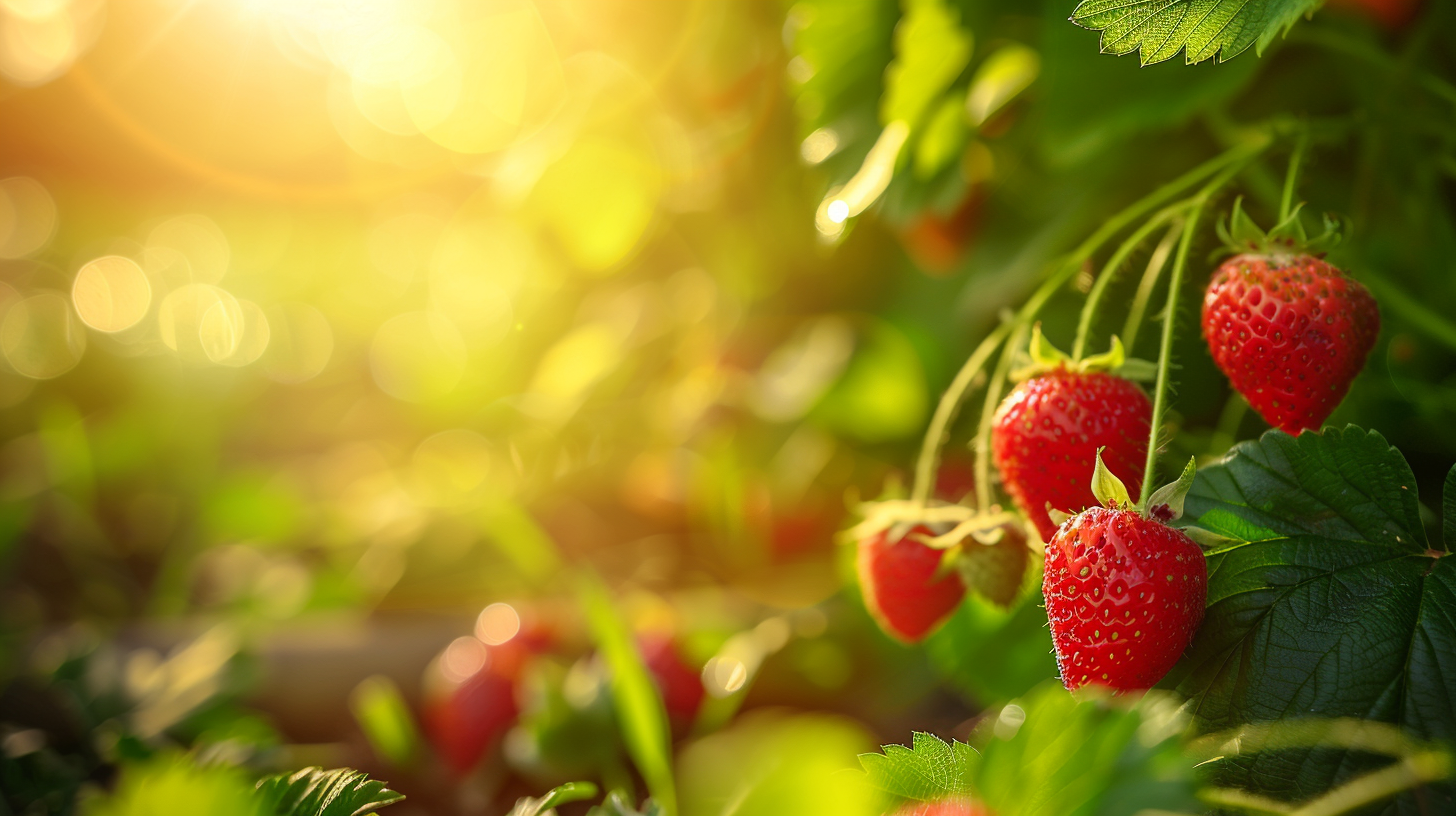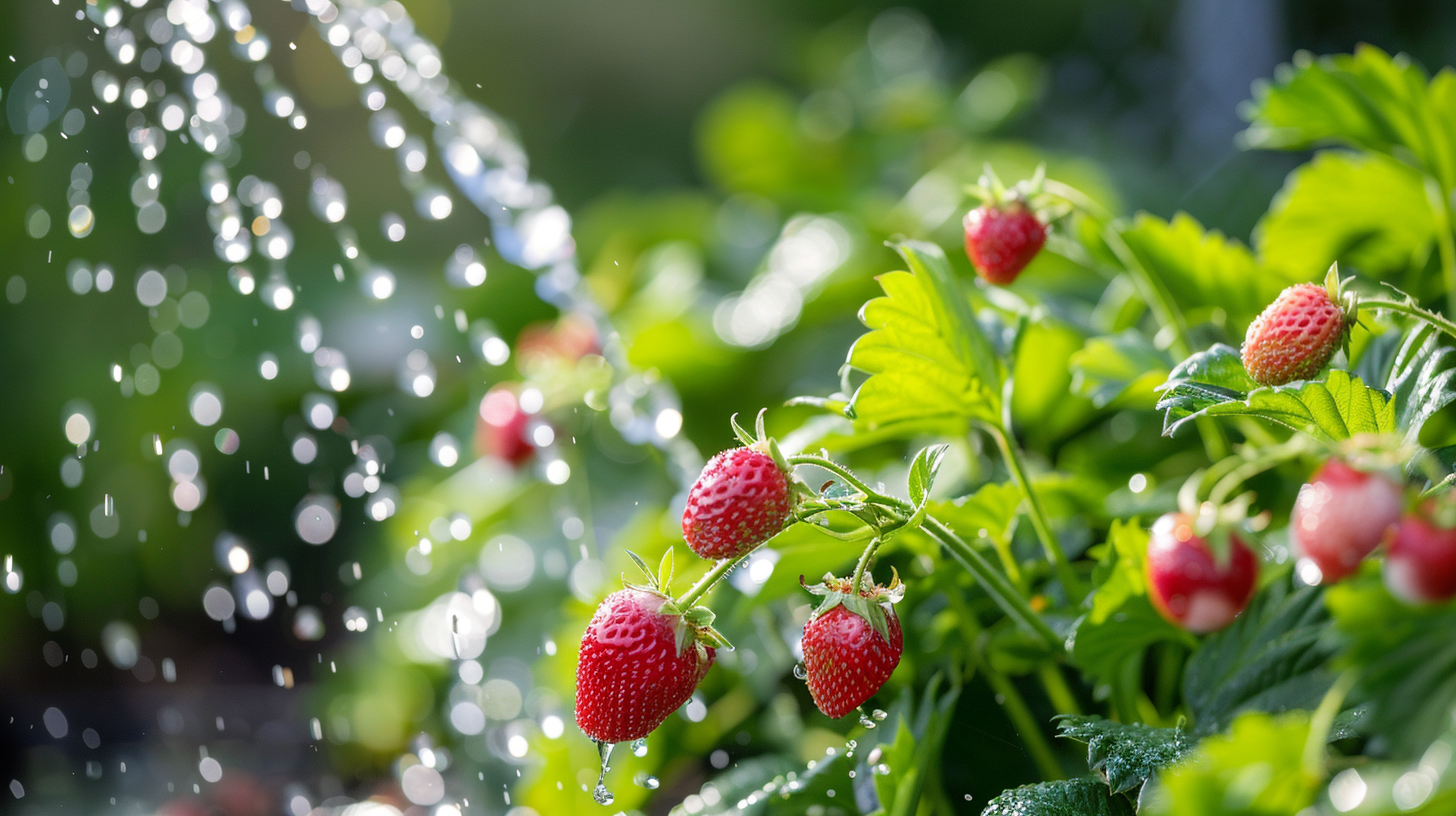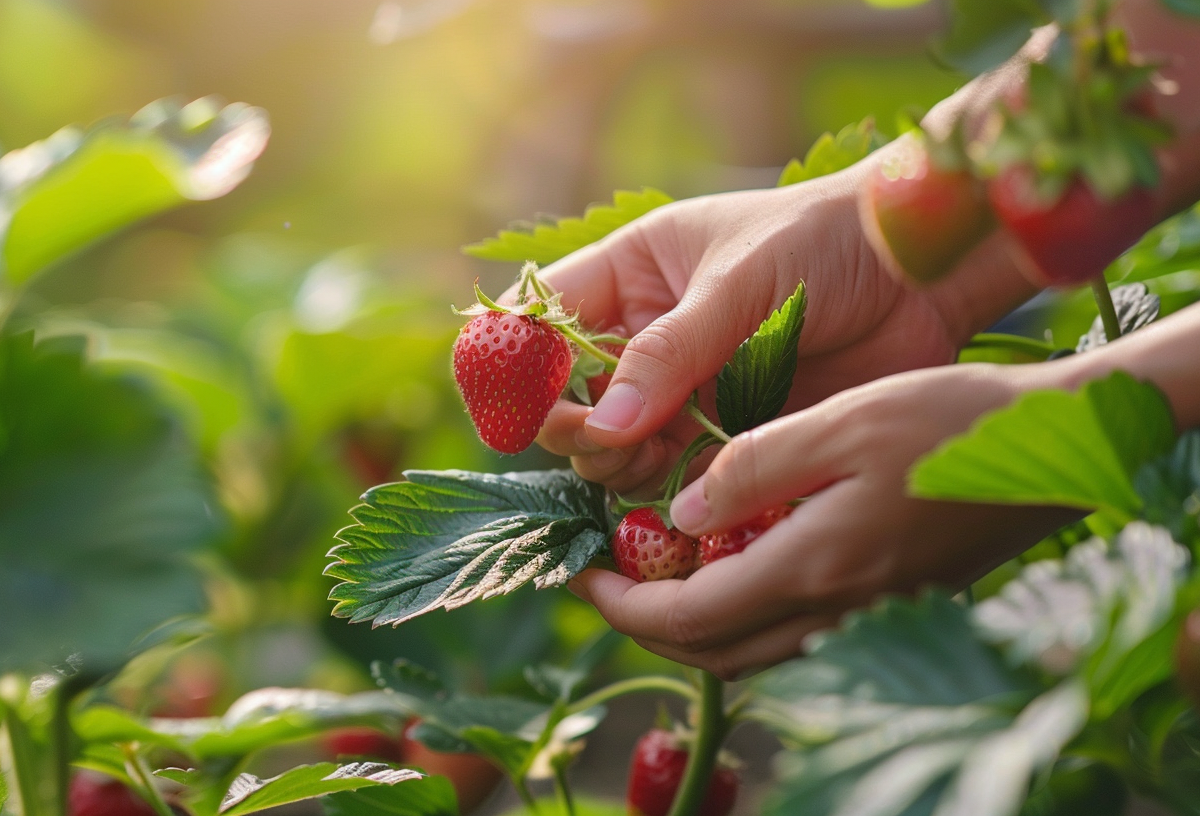Growing your strawberries is a rewarding experience, but it can be frustrating when your harvest is less than expected.
Luckily, with the right care and attention, you can maximize your perennial strawberry harvest year after year.
This guide will share proven tips to help you get the most out of your strawberry patch.
From selecting the best varieties for your area to providing optimal growing conditions and care, you’ll learn how to create a thriving strawberry garden that produces an abundance of sweet, juicy berries.
Whether you are a beginner or an experienced gardener, these techniques will help you enjoy a bountiful strawberry harvest for future seasons.
So, let’s dive in and discover how to make the most of your perennial strawberry plants!
Comparison of Perennial Strawberry Types
When selecting strawberry plants for your garden, it’s important to understand the differences between June-bearing and everbearing varieties.
1. June-Bearing Strawberries
June-bearing strawberries produce a large crop of berries over a short period, usually in early summer.
This type is ideal if you want to harvest a significant amount of fruit all at once, which can be great for making jams, preserves, or freezing berries for later use.
2. Everbearing Strawberries
On the other hand, everbearing strawberries produce smaller yields but offer a longer harvesting period.
These plants continue to fruit throughout the growing season, providing a steady supply of fresh berries for your table.
If you prefer a consistent harvest of strawberries for snacking, desserts, or salads, everbearing varieties may be the best choice for your garden.
Steps to Enhance Your Perennial Strawberry Harvest
1. Selecting the Right Location

Strawberries require full sun exposure for most of the day to maximize fruit production and maintain healthy growth. Aim for a spot that receives at least 6-8 hours of direct sunlight daily.
Strawberries grow best in well-drained, loamy soils rich in organic matter. Avoid planting in heavy clay or poorly drained soils, leading to root diseases and stunted growth.
Consider raised beds or containers with high-quality potting mix if your garden has less-than-ideal soil.
2. Testing the pH of the Soil
Conduct a soil test to determine the current nutrient content and pH level. Strawberries prefer slightly acidic soil with a pH between 5.5 and 6.8.
Based on the soil test results, you may need to amend the soil to create the optimal growing environment for your strawberries.
If the pH is too low, add lime to raise it; if it’s too high, incorporate sulfur to lower it. Mix in organic matter such as compost, well-rotted manure, or aged pine bark to improve soil fertility and structure.
This will help retain moisture, improve drainage, and provide essential nutrients for your strawberry.
3. Removal and Suppressing Weeds
Control weeds in the planting area before planting. Use ground covers or solarization techniques to suppress weed growth and reduce resource competition.
This can also help decrease the risk of pests and diseases in your strawberry patch.
4. Effective Planting Strategies
Plant your strawberry crowns at the correct depth, ensuring that the crown is level with the soil surface. The optimal spacing between plants depends on the type of strawberry and the planting system you choose.
June-bearing strawberries in matted rows can be spaced closer together, while day-neutral varieties in hills or raised beds require wider spacing.
Different planting systems offer various benefits for strawberry production.
The matted row system works well for June-bearing strawberries, allowing runners to fill the space between plants.
Spaced row and hill systems are better suited for day-neutral and everbearing varieties, as they promote larger, higher-quality berries and make harvesting easier.
Depending on your regional climate, the best time to plant strawberries is early spring or late fall. Planting at the right time ensures that your plants can establish themselves before extreme weather conditions arrive.
5. Taking Care of Roots During and Right After Planting
When preparing your strawberry plants for planting, handle the roots gently.
If the roots are dry, soak them in water for an hour before planting to ensure they are well-hydrated. If the roots are excessively long, trim them to about 5 inches to make planting easier.
After planting, water your strawberries thoroughly to help settle the soil around the roots and encourage strong root development.
Maintain consistent moisture during the establishment phase, but avoid overwatering, which can lead to root rot.
6. Watering Regimes for Perennial Strawberry Plants

Strawberry plants have different watering needs depending on their growth stage.
Keeping the soil consistently moist during the establishment phase is essential to encourage strong root development.
As plants begin flowering and fruiting, maintain steady moisture levels to support flower and berry production.
Remember that water stress during these critical stages can negatively affect plant health and produce smaller berries.
When watering your strawberry patch, consider using drip irrigation or soaker hoses. These methods deliver water directly to the roots, providing consistent moisture while minimizing leaf wetness, which can help reduce the risk of fungal diseases.
Monitor soil moisture levels regularly to ensure your strawberries receive the optimal water.
Use a soil moisture meter or assess the soil manually by feeling the top inch. If it feels dry, it’s time to water.
7. Fertilization Strategies
Properly timing your fertilizer applications is crucial for supporting vigorous growth and abundant fruit production in strawberry plants.
Apply fertilizer post-planting to give your strawberries a strong start, then pre-flowering to support bud development again.
During fruit development, fertilizing helps ensure your berries reach their full size and sweetness potential.
When choosing fertilizers for your strawberries, choose balanced, slow-release options that provide a steady supply of nutrients for initial growth.
Switch to high-potassium fertilizers as your plants begin fruiting, which can enhance fruit quality and improve disease resistance.
To ensure your strawberries absorb and utilize the nutrients effectively, spread the fertilizer evenly over the soil surface before rain or water it thoroughly after application.
8. Importance of Runner Management
Strawberry plants produce runners, long, slender stems that grow outward from the main plant, forming new plants at their tips.
While runners are useful for propagating new strawberry plants, if left unchecked, they can divert energy away from fruit production.
Managing runners throughout the growing season is essential to maximizing strawberry yields. Trim runners early on to encourage your plants to focus their resources on developing flowers and fruits.
If you want to propagate new plants, select only a few strong, healthy runners and allow them to root, removing the rest.
June-bearing strawberries produce more runners than day-neutral or everbearing types, so they may require more frequent runner management.
9. Identifying Common Pests and Diseases
Common pests that can damage strawberries include spider mites, which create fine webbing on the undersides of leaves; aphids, which feed on plant sap and cause leaf curling; and slugs, which chew holes in the fruit.
Strawberries are also susceptible to various diseases, such as powdery mildew, which appears as white, dusty patches on leaves; gray mold that causes fuzzy gray spores on fruit; and verticillium wilt, which leads to yellowing and wilting of foliage. These diseases thrive in specific conditions, like high humidity or poor air circulation.
10. Integrated Pest Management (IPM)
Integrated pest management (IPM) is your strawberry patch’s most effective approach to managing pests and diseases. This holistic strategy combines cultural, biological, and chemical control methods based on regular monitoring and action thresholds.
Keep a garden journal to document any pest or disease issues, your treatments, and their effectiveness.
Over time, this information will help you refine your IPM strategy and anticipate problems before they occur.
11. Techniques for Harvesting at Peak Ripeness
Watch for berries that have developed their full, vibrant color and reached their optimal size. Ripe strawberries will also have a delightful aroma that signals they’re ready to be picked.
When harvesting your strawberries, gently twist or snip the stems with clean scissors, leaving a small portion of the stem attached to the fruit.
This method helps prevent damage to the berries and the plant itself. Handle the fruit carefully to avoid bruising, and place them in a container that won’t crush the berries at the bottom.
Check your plants daily during the peak harvest season, as strawberries can ripen quickly. Regular harvesting ensures you catch each berry at its best and encourages the plant to produce more fruit.
12. Strategies for Extending the Harvest Period
Removing the early-season flowers can extend the harvest period for everbearing strawberry varieties. This encourages the plant to put more energy into producing a larger crop later in the season.
Ensure consistent watering and feeding throughout the growing season to support the plant’s continuous fruit production.
When growing day-neutral strawberries, manage plant density and control runners to maximize light exposure and nutrient availability for the fruit-bearing plants. This helps ensure a steady supply of high-quality berries over a longer period.
In addition to variety-specific techniques, you can use environmental management strategies to extend your strawberry harvest.
Apply mulch around your plants to regulate soil temperature and moisture, which can help prolong fruit production. Row covers can also protect your plants from early frosts, allowing you to continue harvesting later in the season.
Adjust your plant care practices to support ongoing fruit development as the season progresses. This may include modifying your watering and fertilizing schedule and monitoring for pests and diseases that could impact your harvest.
By implementing these techniques and staying attentive to your plants’ needs, you can enjoy a longer, more bountiful strawberry harvest from your perennial patch.
13. Specific Steps for Renovating Strawberry Beds
The ideal time to renovate your strawberry bed is immediately after the main harvest period. This timing allows the plants to recover and prepare for the next growing season.
Begin the renovation process by mowing the strawberry foliage to just above the crowns, taking care not to damage the crowns themselves. This will remove old, diseased, or pest-infested leaves and stimulate new growth.
Next, thin out older, less productive plants to reduce overcrowding. Remove plants that show signs of decline, disease, or poor vigor, focusing on keeping the healthiest and most productive plants.
After thinning, narrow the rows by removing excess plants to maintain optimal spacing. This improves air circulation, makes the plants more accessible for care and harvesting, and allows the remaining plants to receive adequate resources.
14. Pruning and Thinning Techniques
During renovation, prune off unnecessary runners that may divert energy from fruit production. Select strong, healthy runners to establish new plants and remove the rest if needed.
As you thin your strawberry patch, be selective in removing older plants that are no longer performing well. Focus on keeping younger, more vigorous plants with the greatest potential for future productivity.
If parts of your strawberry bed have declined significantly, consider replanting those sections with new, disease-free plants. This ensures that your entire patch remains healthy and productive.
By renovating your strawberry bed annually, you can maintain a thriving, high-yielding patch that continues to provide delicious berries for years to come.
Understanding the Need for Renovation
Over time, strawberry plants can become overcrowded and less productive due to the accumulation of older, less vigorous plants and the growth of many new runners.
This crowding can lead to smaller berries, reduced yields, and increased disease susceptibility. Renovating your strawberry bed helps address these issues and rejuvenates your plants for the next growing season.
The benefits of renovation include improved air circulation among the plants, which can reduce disease pressure, and the removal of older, less productive foliage, which allows the plants to focus their energy on new growth and fruit production.
Conclusion
Maximizing your perennial strawberry harvest requires careful planning, attentive care, and timely maintenance.
By selecting the right varieties for your needs, preparing your soil, and using effective planting strategies, you can set your strawberry patch up for success.
Proper watering, fertilizing, and runner management will keep your plants healthy and productive throughout the growing season.
Vigilant monitoring and quick action against pests and diseases will protect your berries from damage.
When harvest time arrives, pick your strawberries at peak ripeness and explore strategies to extend your harvest.
Finally, don’t forget to renovate your patch annually to keep it vigorous for years. With dedication and these proven techniques, you’ll savor the sweet rewards of your thriving strawberry patch.
Happy gardening!






